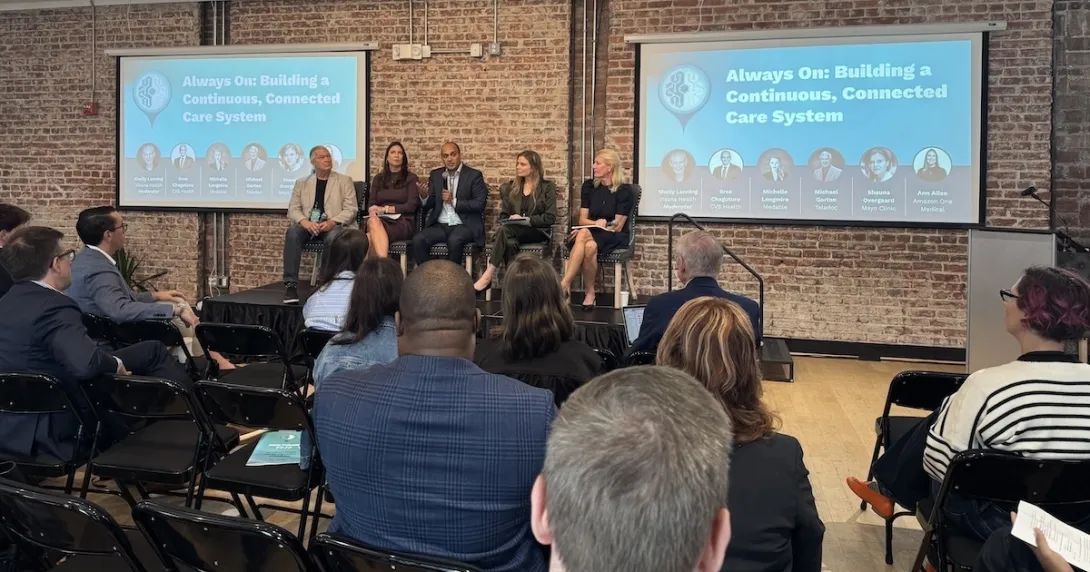
Michael Gorton of Teladoc, Ann Allen of Amazon One Medical, Sree Chaguturu of CVS Health, Shauna Overgaard of Mayo Clinic and Shelly Lanning of Visana Health
Photo: Jessica Hagen/MobiHealthNews
WASHINGTON, D.C. – During the Digital Medicine Society (DiMe) Healthcare 2030 event here on Monday, panelists discussed how new models in primary care and patient communication have helped create a more connected care system.
If one wanted to talk to a doctor in 2000, they had to call an office and wait weeks to see one and there were no electronic medical records, said Teladoc founder Michael Gorton, a panelist for the session, "Always On: Building a Continuous, Connected Care System."
"There was no national network of doctors," said Gorton.
On top of that, the average time one spent with a provider was seven to 10 minutes, according to panelist Ann Allen, chief operating officer and director of health system partnerships at Amazon One Medical.
According to the panelists, things have changed for the better as patients now get 30-minute appointments and dedicated time to talk to a clinician.
"Now, we have 24/7 wrap-around virtual medical teams that had not existed prior – someone who could pick up right after your provider ends their day at five in the afternoon and continue to provide care for you and know you," said Allen.
Allen noted that in today's healthcare landscape, there exists an infrastructure on the technology side that equips people to book appointments, renew prescriptions and access their health information using their mobile devices.
The panelists pointed out that there are challenges associated with creating a connected system and deciding on what to unify.
Sree Chaguturu, president of healthcare delivery at CVS Health, said the cost of replatforming is coming down as AI coding becomes much cheaper.
"There is a question that you have to ask: When do you want to actually replatform? And then when you do that, it is also based on what the business use case is that you are trying to solve for," Chaguturu said.
Chaguturu said CVS replatformed its pharmacy because it was looking to connect the retail health experience with its specialty mail order.
"You can replatform and spend a ton of money on infrastructure projects, but if it is not built on business needs first, then they become flights of fancy and incredibly expensive with nothing to show on the back end," Chaguturu said.
When deciding on what system to build to prioritize the needs of patients, the Mayo Clinic determined that documentation had to be included.
"Something that our teams proposed was documenting on an AI solution itself all the way down to the foundational data elements of metadata," said Shauna Overgaard, senior director of AI strategy and frameworks at Mayo Clinic.
"Along those lines, though bringing in each of the stakeholders to do that documentation, thinking about the developers are data scientists, bio statisticians, clinician, informaticists, clinicians themselves."
In addition Overgaard said, "You can think about the entire AI life cycle and all the stakeholders involved. Everyone has a specific evaluation criteria and function that is intentionally needed to be able to make communication from one step to the next."

